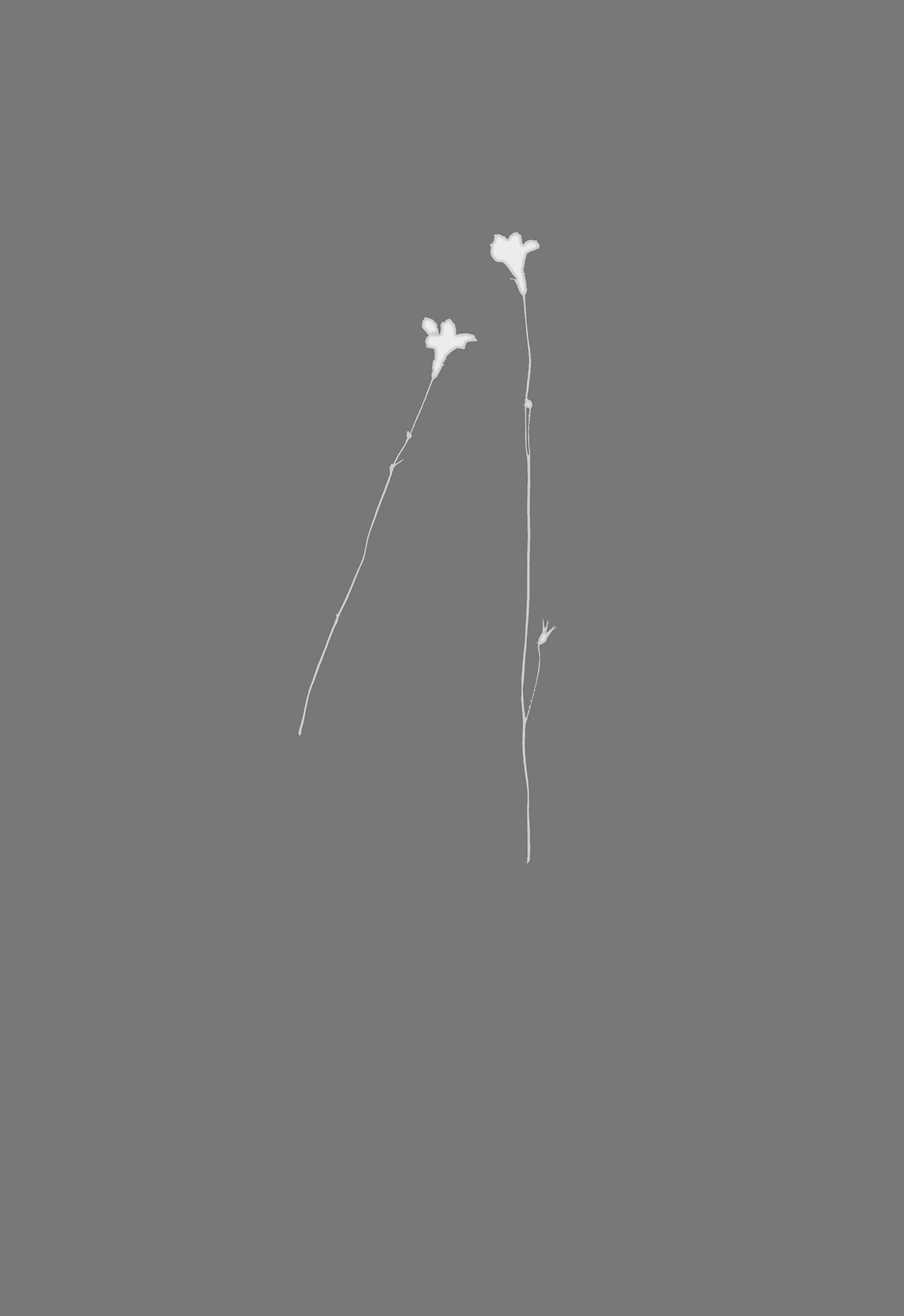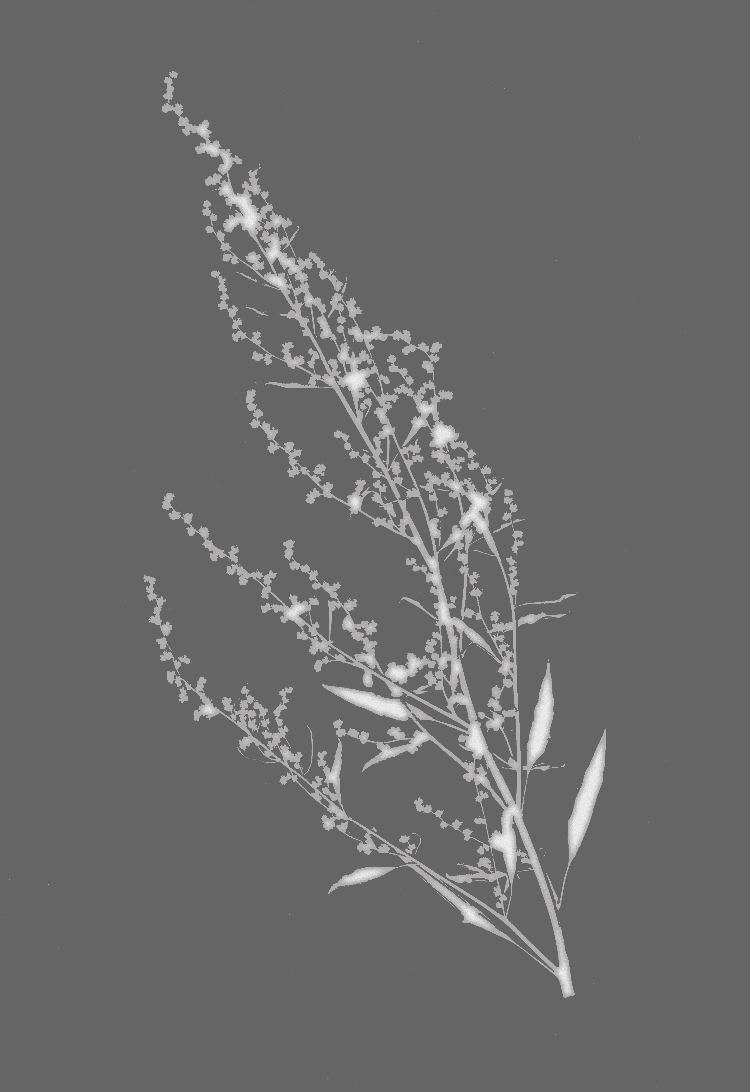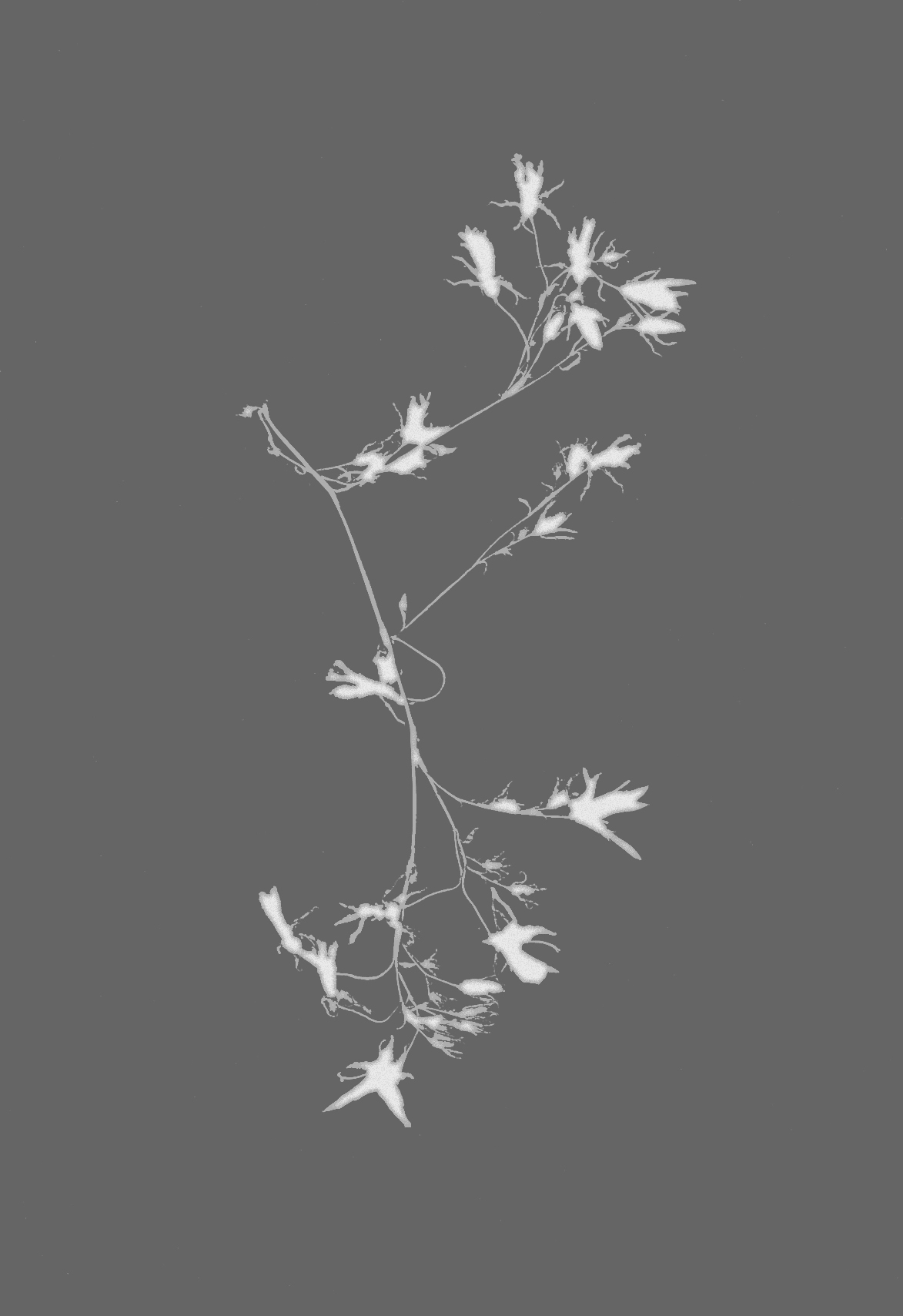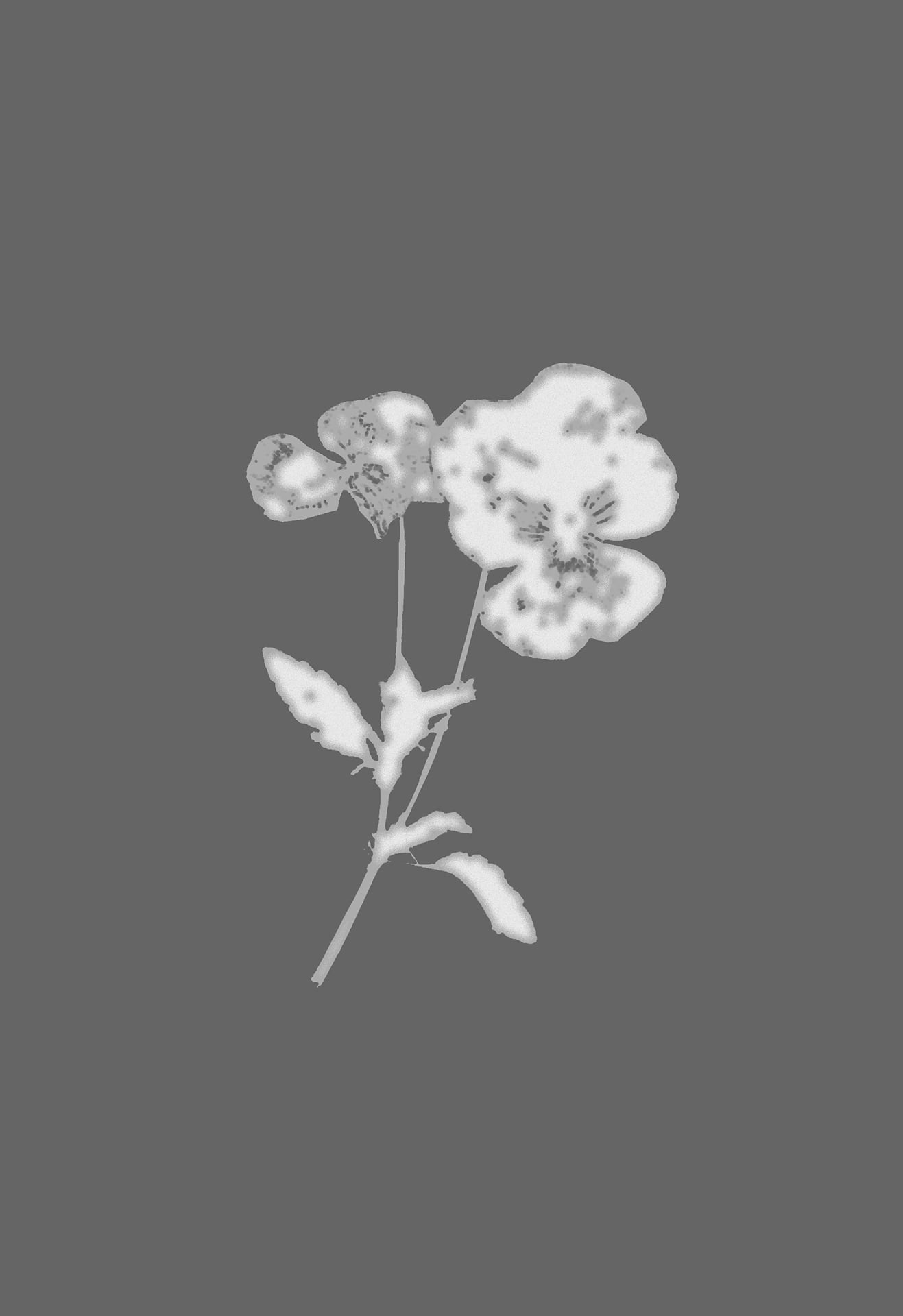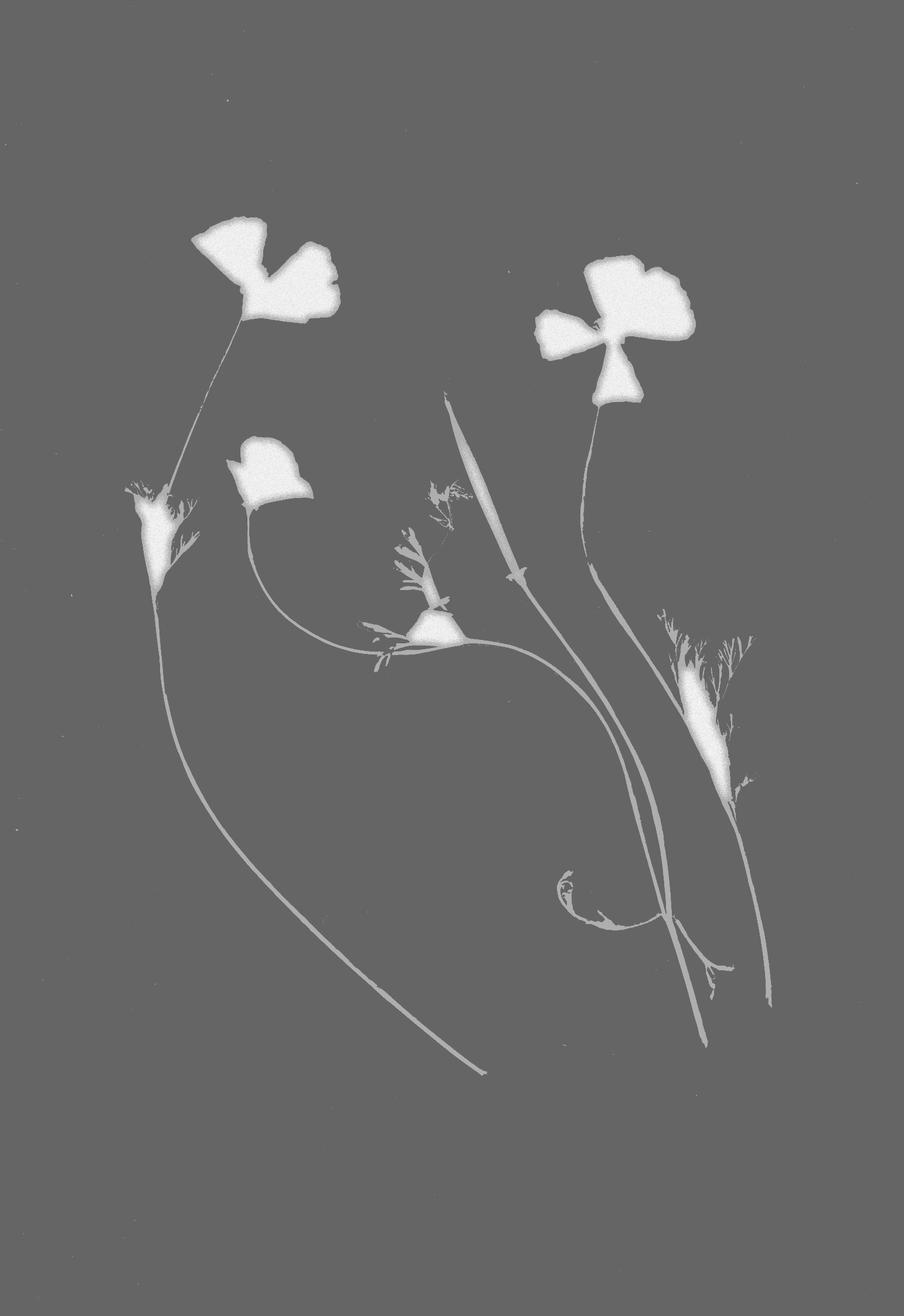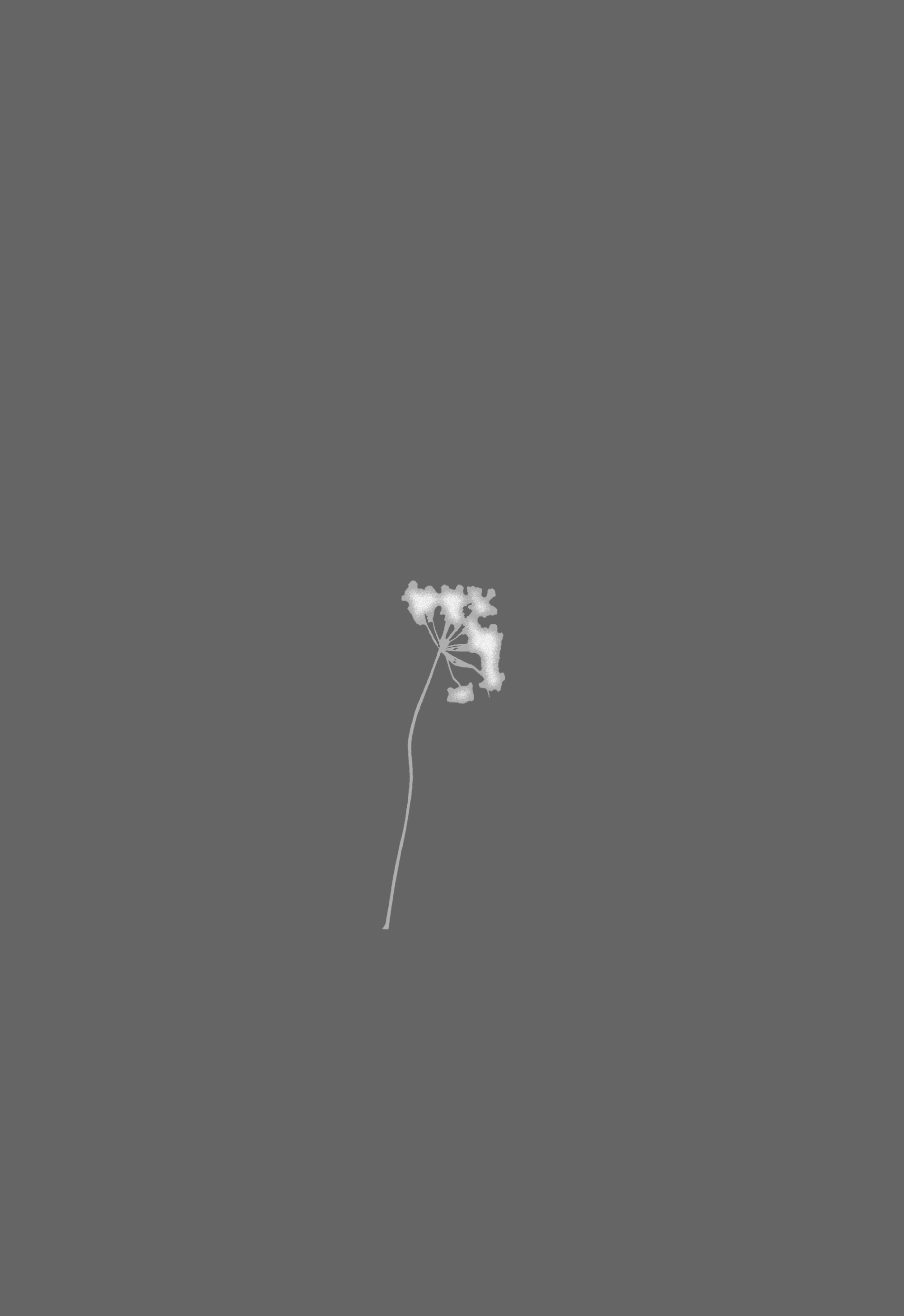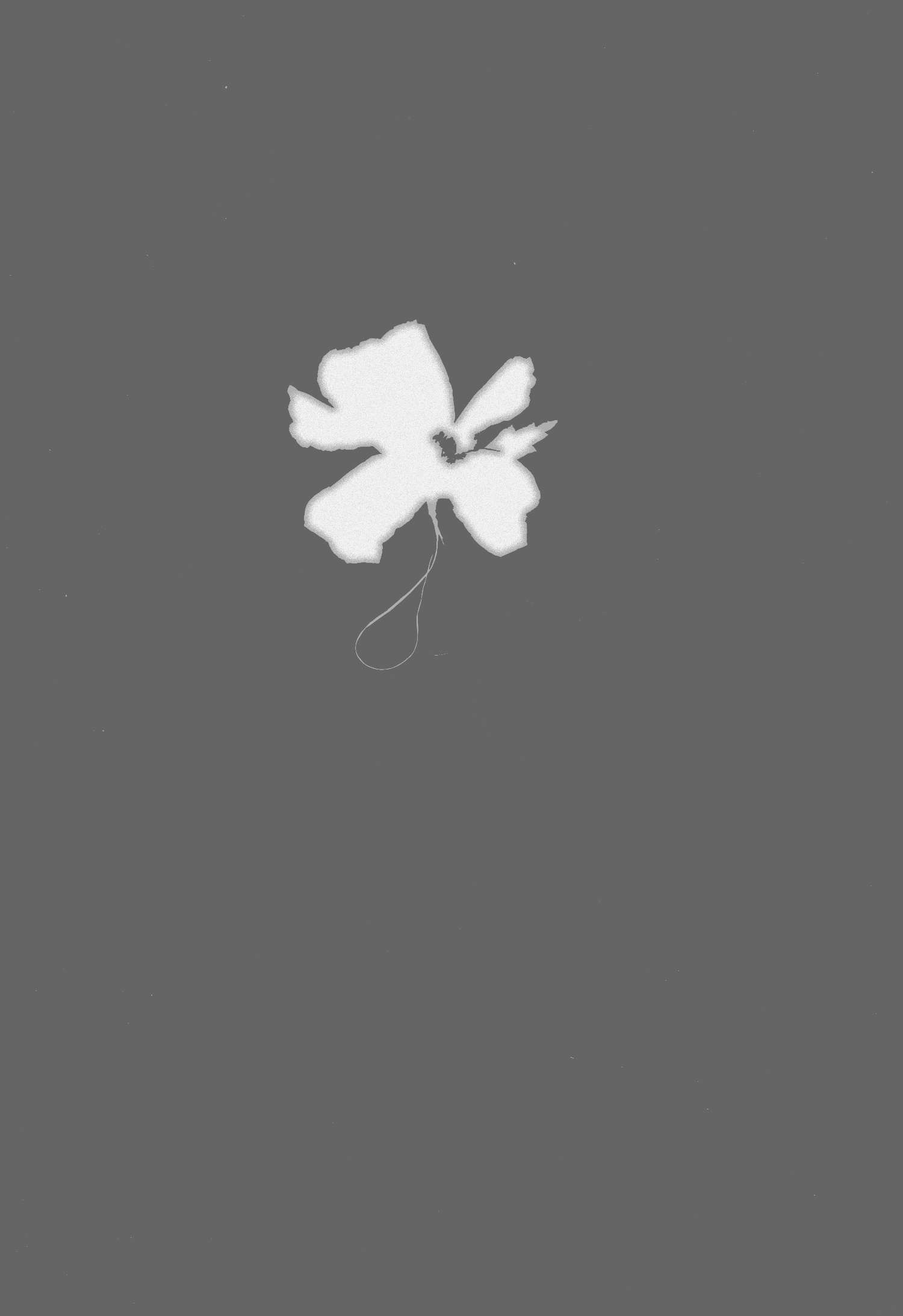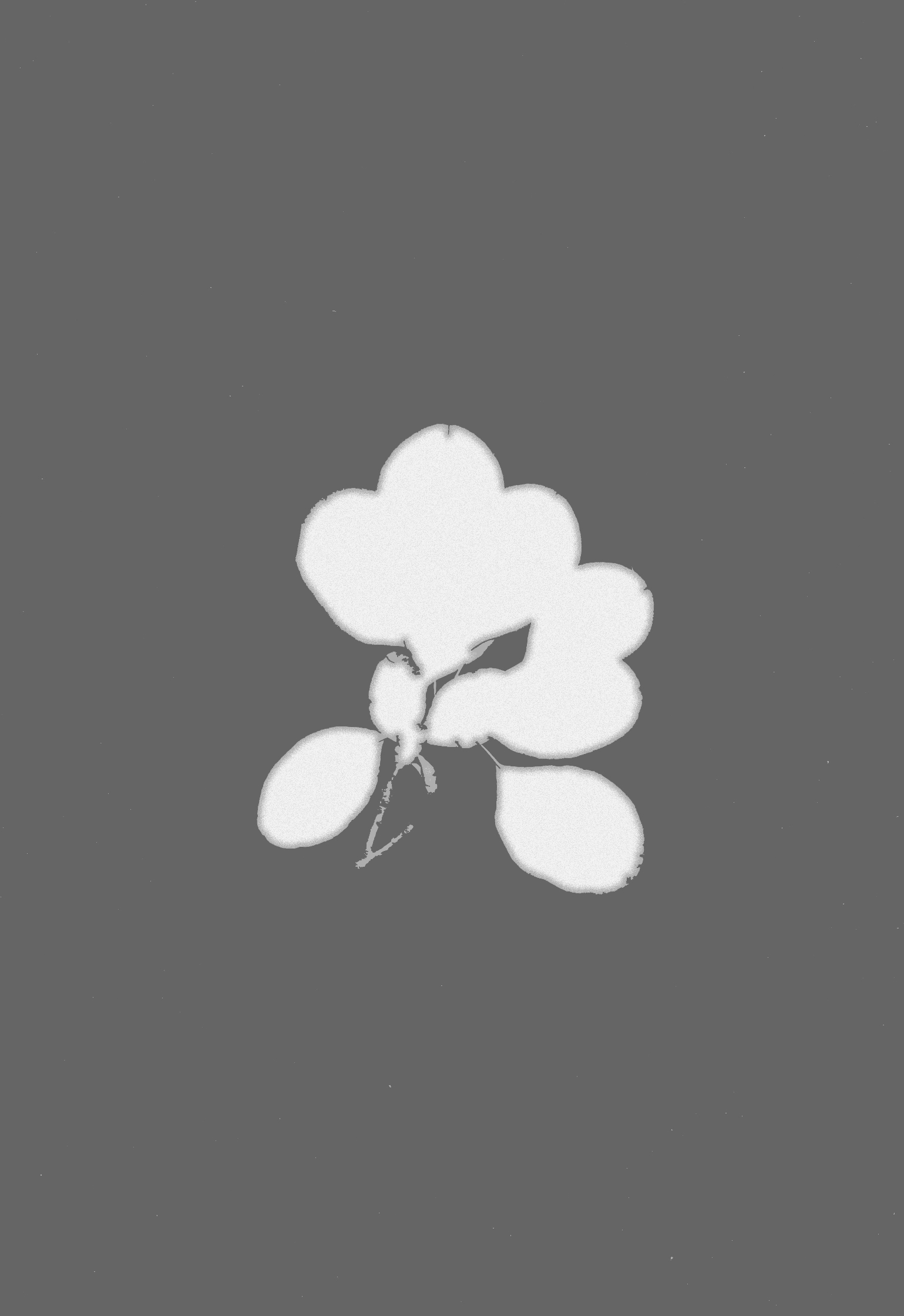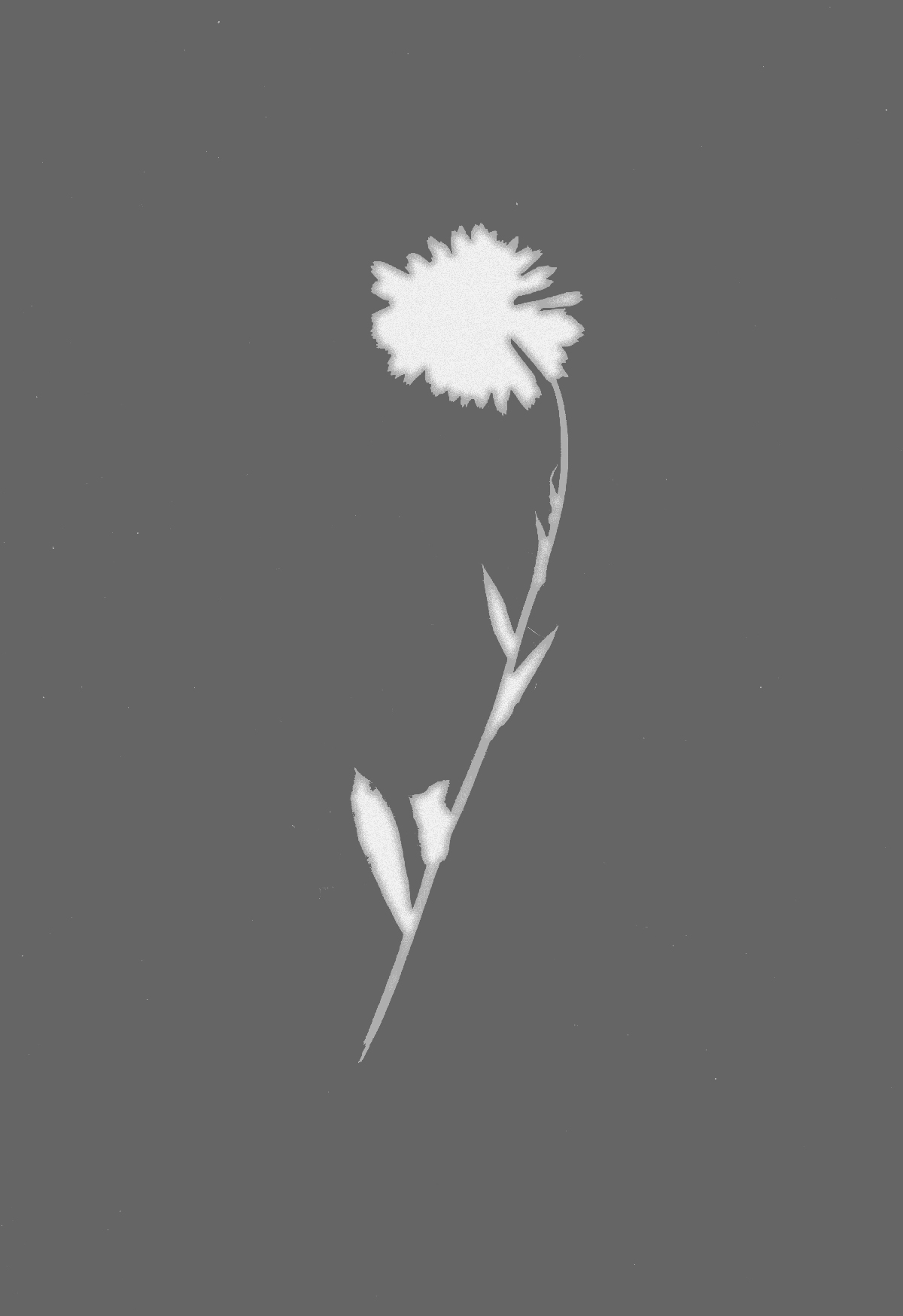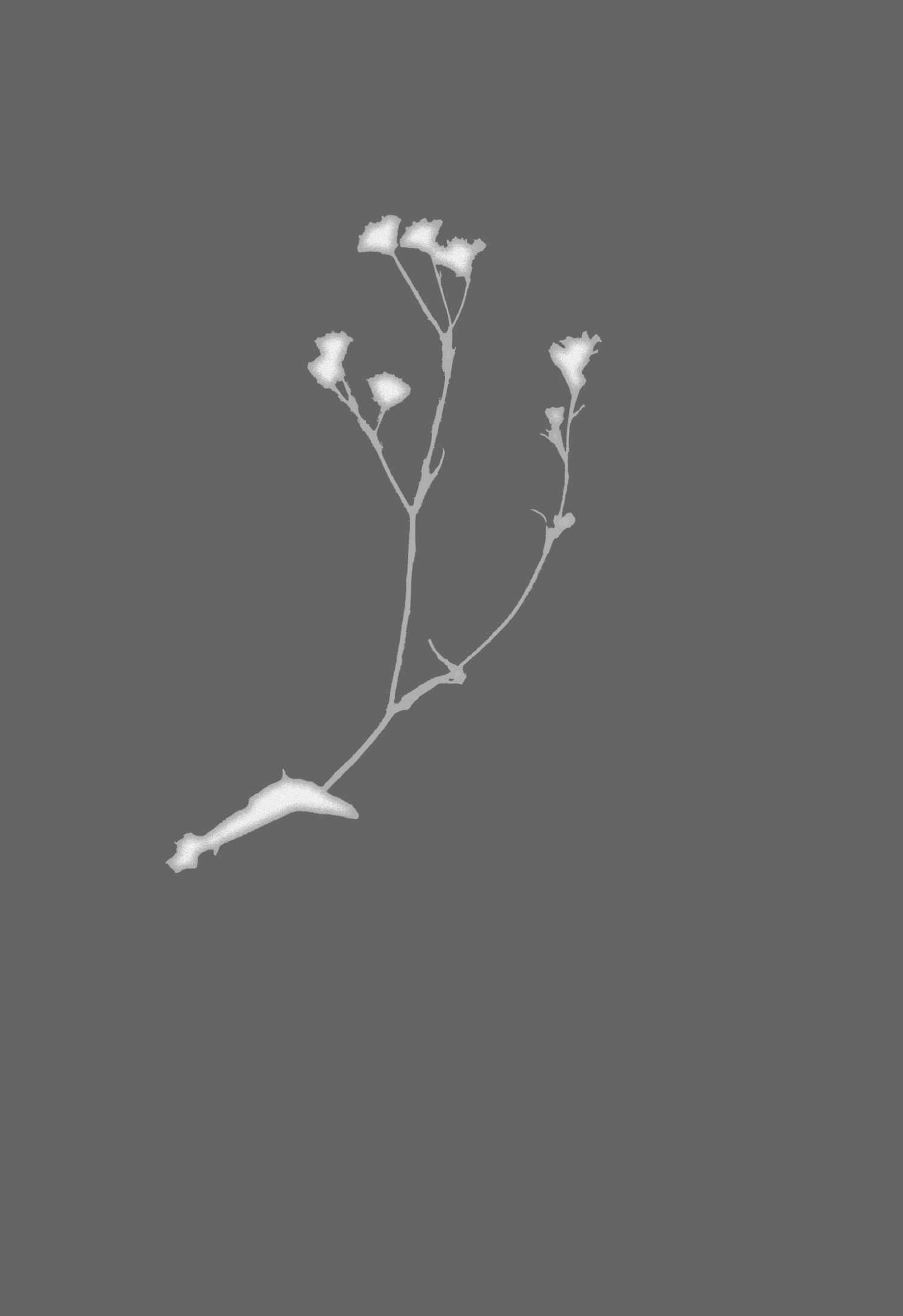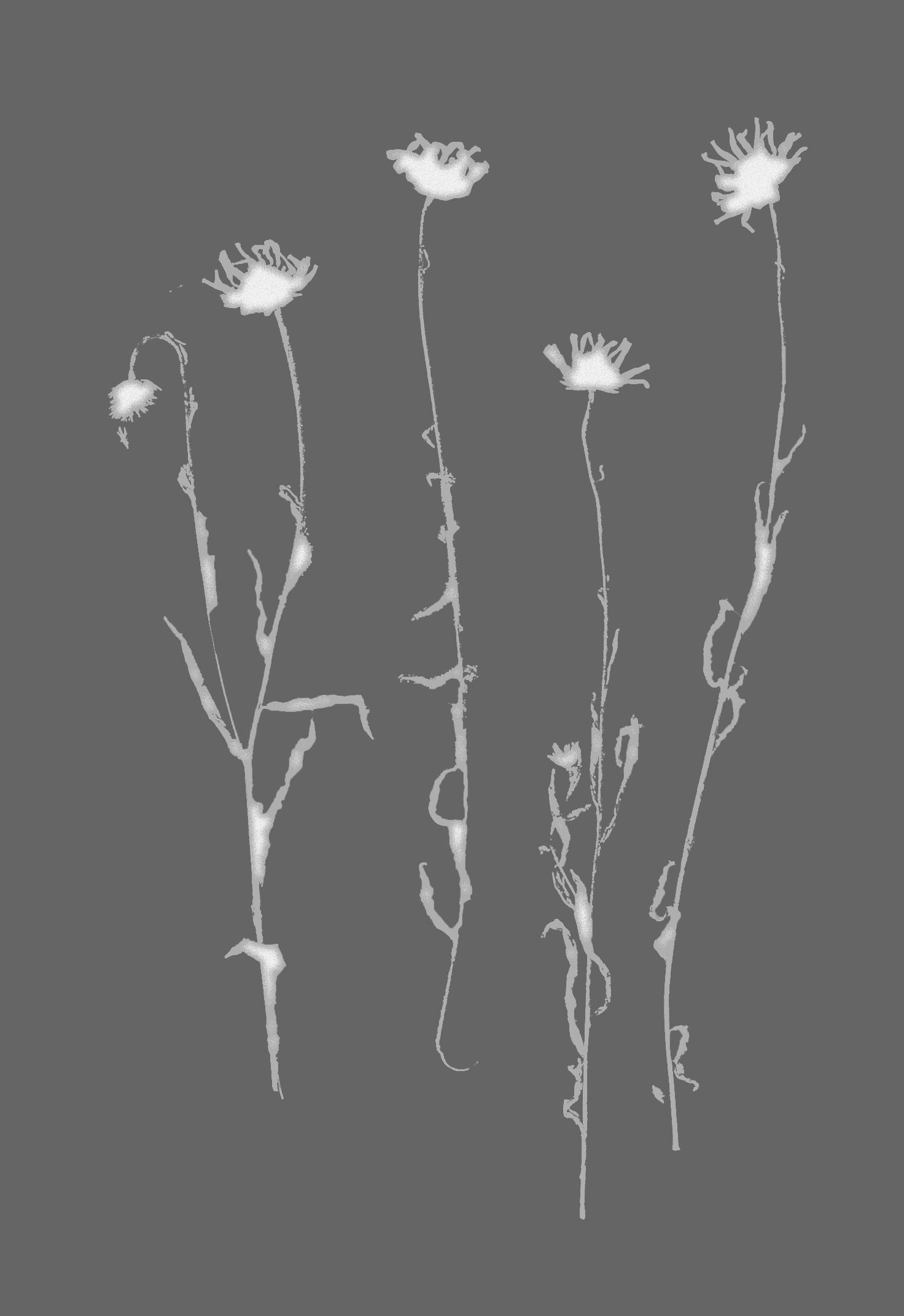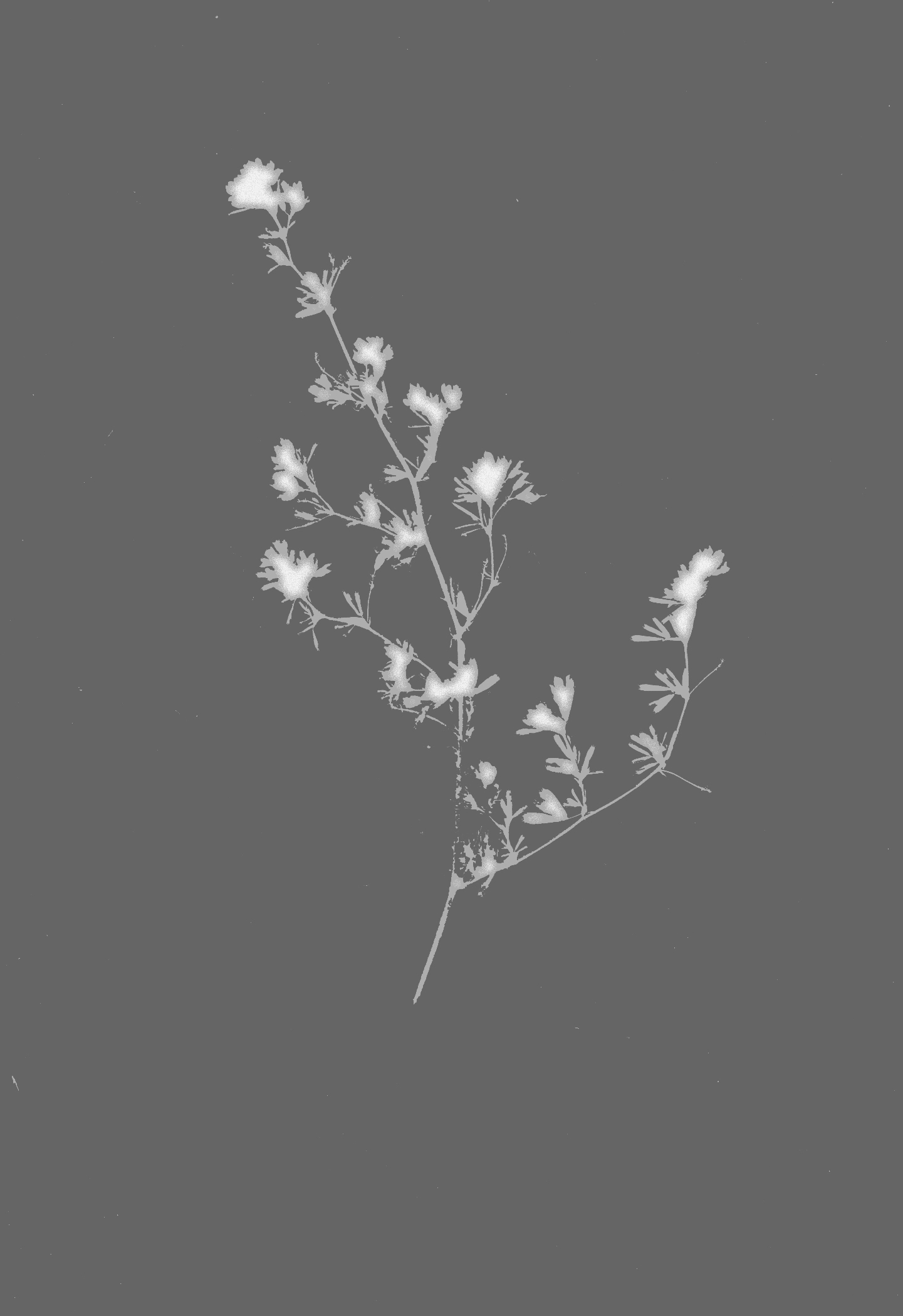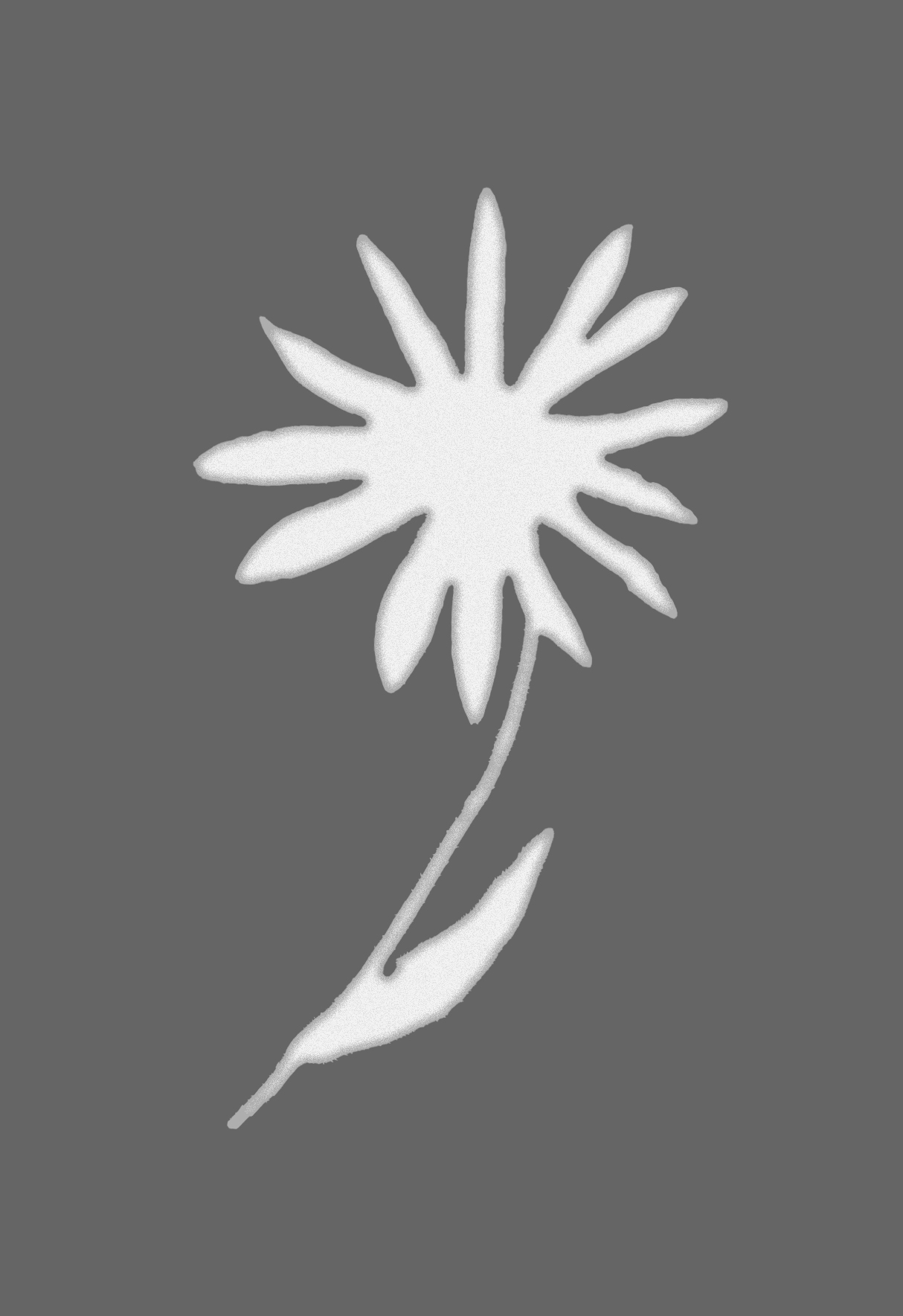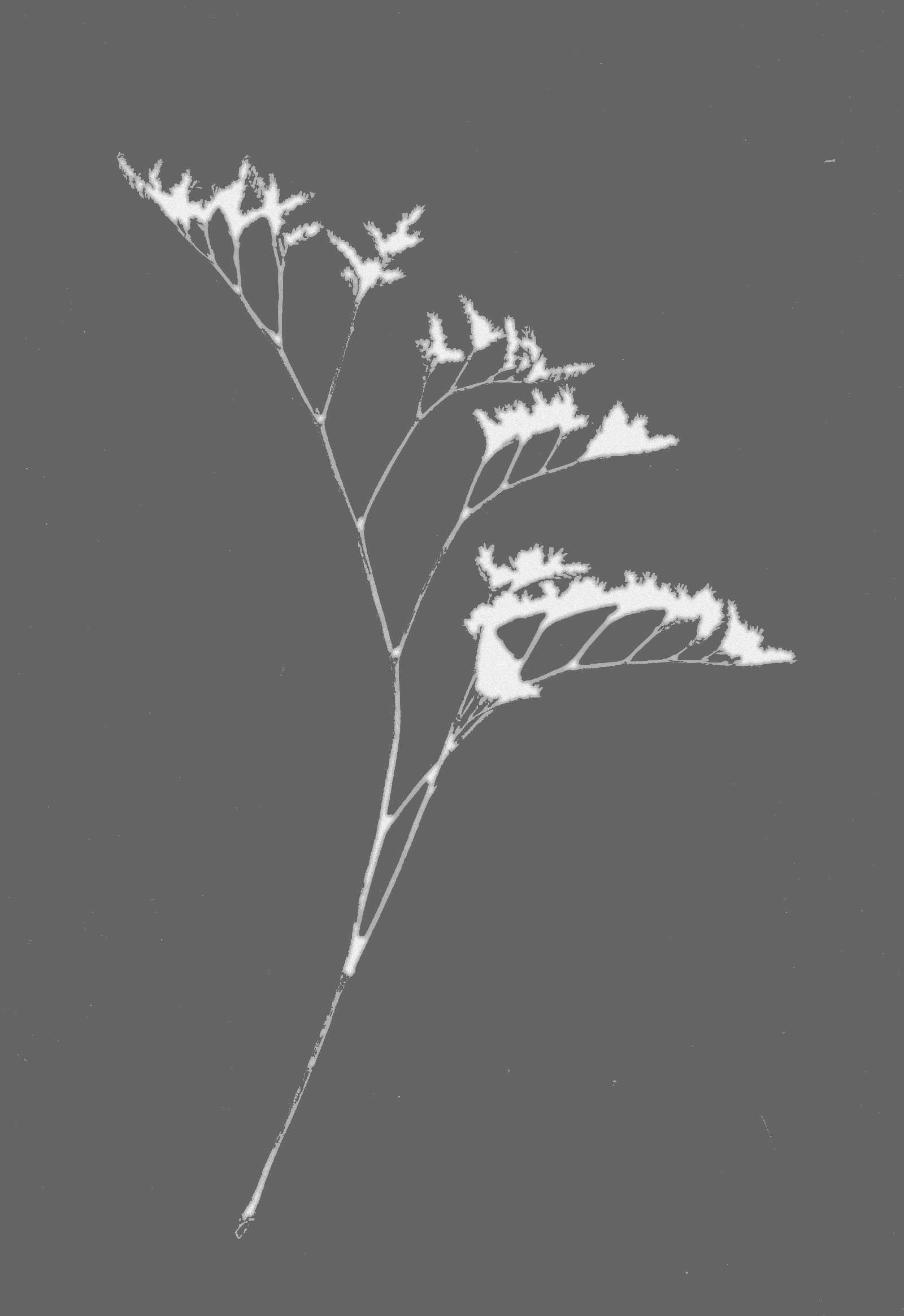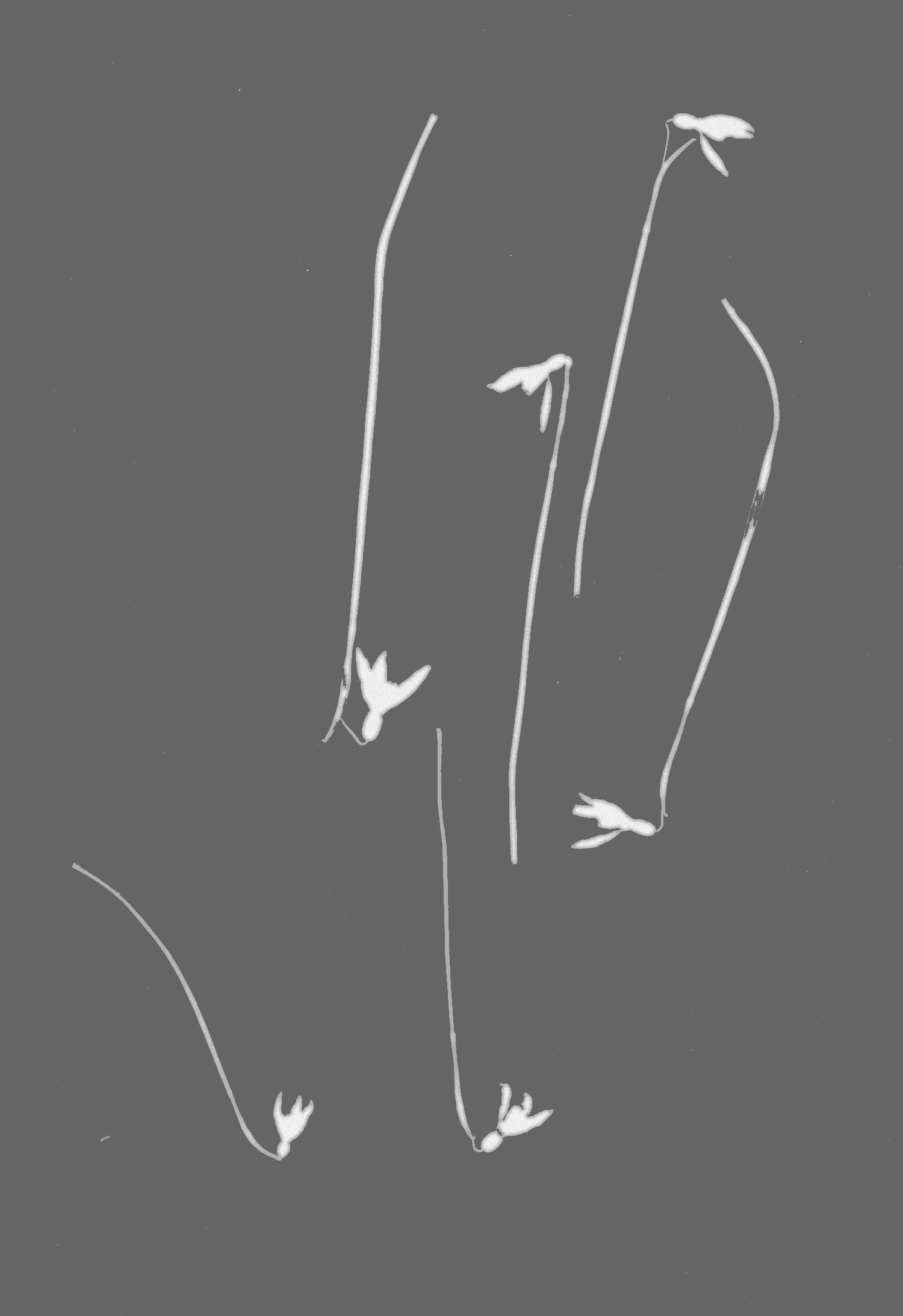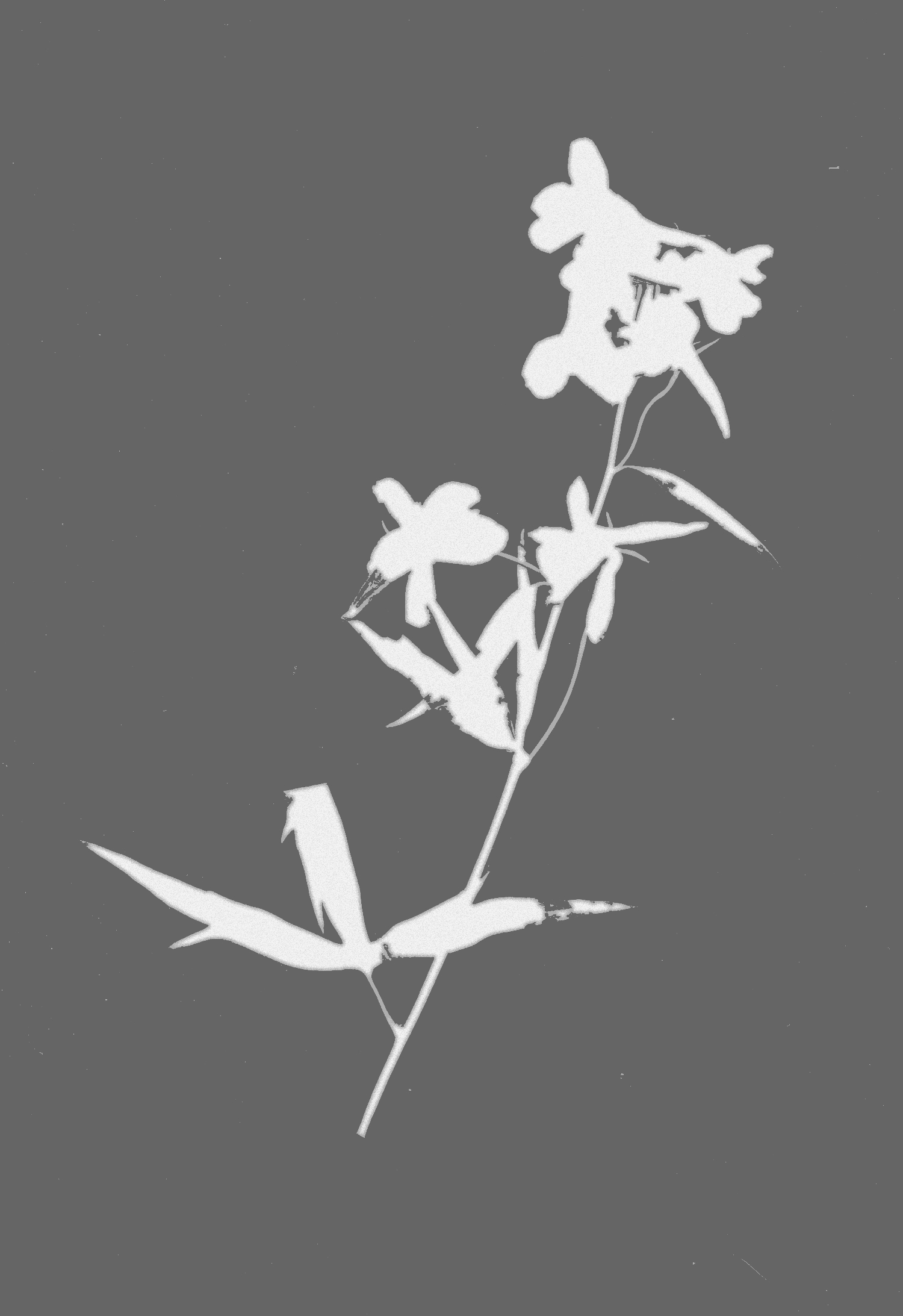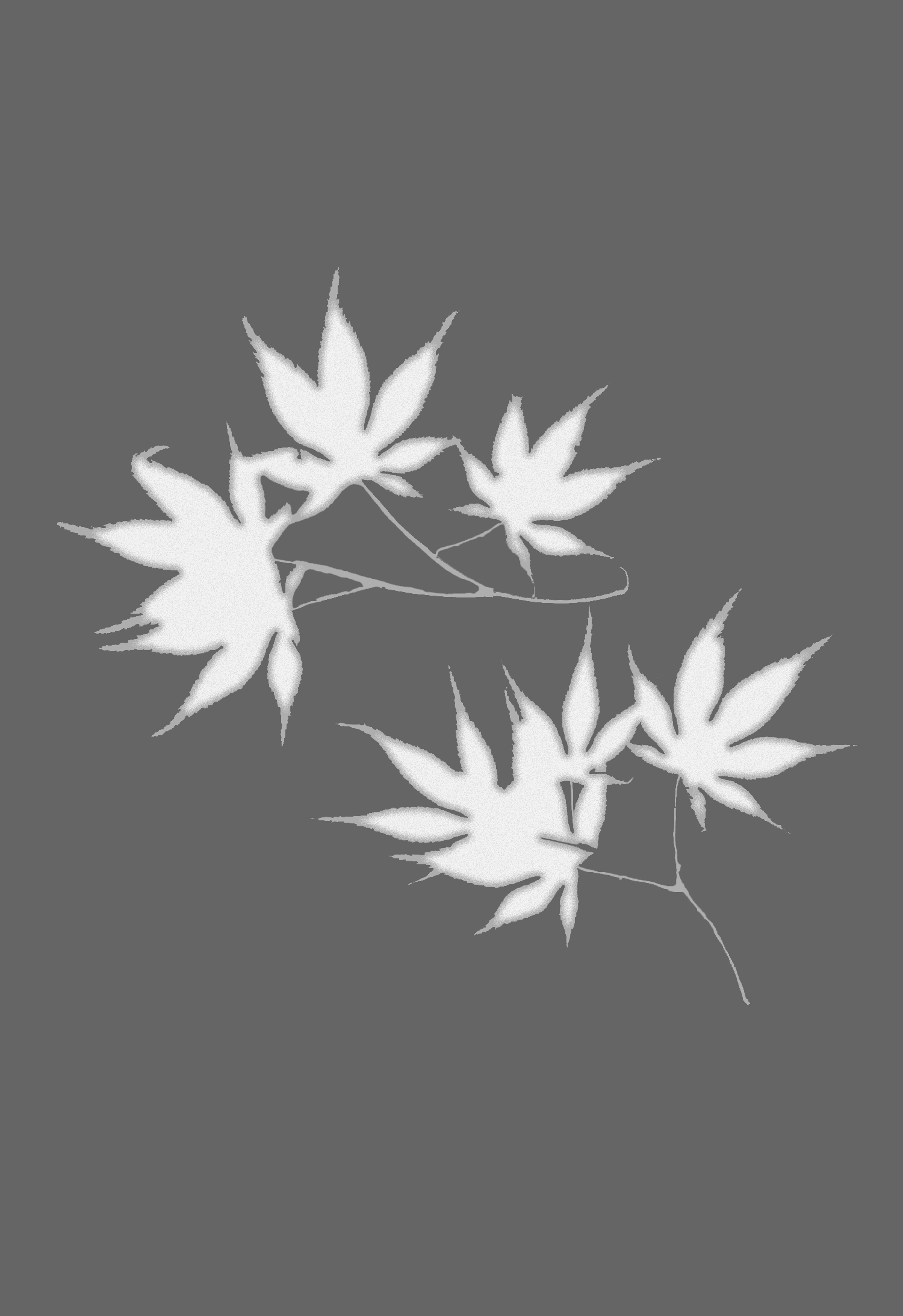"It is a rhythmic movement, regular and tireless, a wave without noise that goes to the limits of the horizon and comes back to us, to brush against our bodies and to explode into our lungs. [...] To live is to breathe and embrace in one’s breath all the matter of the world."
Emanuele Coccia, Life of Plants
Abstract
Nature has appealed to the imagination for centuries and has been a great source of inspiration for
humanity. Because of its cyclical and transformative aspect, ornaments of plants symbolise
immortality. Through my personal research and experiences with nature and my roots, I started seeing
the Herbarium as an ornament, and the garden as a
This thesis will discuss the necessity of the garden and the botanical collections in the digital
era. The garden and Herbaria gives us an immediate connection with nature that is often
neglected with people in a digitised realm. Besides the spirituality and our appreciation of the
garden, I will also touch upon some criticism of human interference
In this way, the purpose of this paper is to provide a critical and more inclusive understanding of
the relationship between nature, humanity and technology, and how
Introduction
The garden is a piece of land where there is a constant movement of change that is influenced by time, weather and the inhabitants that engage with the objects surrounding them and the space. In the garden, the individual holds their own piece of nature; the gardener takes care of the life that grows in their own designed way. Taking into consideration to which plants need more sunlight; the time they take to bloom; which soil is best for the seed or simply just aesthetic preference. As a matter of fact, plants can show us the meaning of life, through the cycle of time. It is a place where we become more aware of the cycle of life and death; of re-birth, care and transformation, through the aesthetics of the floral world. But what has the garden actually been through and what can we still see in its contemporary design?
The garden and Herbaria gives us an immediate connection with nature that is often neglected by people in a digitalized world. For centuries, we try to get a hold on the natural world with floral ornaments that make our urban environment more alive. They symbolize immortality and our desire for nature in a digital realm. Apart from its aesthetics, can the ornament also create an awareness of the stark narrative of the garden and herbaria to reconnect us with nature? Have we lost our appreciation for the garden? How can we come to a present where we can work with nature on a deeper spiritual level in this digitized age?
A partly observational but highly personal story of my own experiences of the garden, herbaria and in general the natural environment, humanity and technology. Written during the hibernation of the garden.
This thesis examines a reflection of my own connection with the garden through my personal ornamental memories, collected in an herbarium.
01 The Living Herbarium
The cycle
Birthing, breathing, sleeping, eating, moving, smelling, tasting, caring, relaxing, fighting,
destroying, rebuilding, loving, reproducing, living, and dying
Rebirth
The garden is where physicality and mentality come together. A spiritual ground where the connection between nature and humanity are extremely close. All our daily sources come directly from nature: crops, medicines, water and oxygen, to name but a few. The animate and inanimate join forces and work together. As you plow the ground with your bare hands and carefully tend to the plants that shape your garden. Every encounter is thoughtful from cutting, weeding and watering your plants to quietly sitting amongst them and simply to listen to the buzzing of insects, the rustling of leaves and the flowers creating colourful landscapes. Nature gives us a pure pleasure, taking us out of the noise of the mechanical world. Being in nature, you enter a different world, one which becomes more symbolic, emotional and personal.
This meditative side of the garden is best shown in Chinese culture. The garden designed using Feng Shui principles is to capture the environment’s natural rhythms and the spiritual equality between man and nature. Gentle curves of grasses and trees encourage wildlife in the garden with a positive and smooth energy flow; taking good care of the garden is very important.
Western garden design stems from a culture of emphasizing modernity. Entertainment was very important, and created romantic memories of the garden. A large central space, various pools and a bandstand, alongside the symmetry of the design, stood for modernity. With the focus being more on the geometric order of the many species. On the contrary, the Hebrews for instance, focused way more on complementing the local landscape of the country and its indigenous plants, without any hierarchy.
Another spiritual paradise, the Garden of Eden , is a place where God created a colourful landscape where butterflies, bees, flowers and trees lived in harmony together with Adam and Eve, the gardeners. He promised them eternal life and happiness and all the food in the world. From this idealized Garden of Eden arose a romantic view on the garden in Western culture, which later on transformed into a modern garden design with a clear hierarchical system of humanity taking control over nature.

Adam and Eve before the Tree of Knowledge (The History of the First Parents of Man). 1604, engraving, 27.5 x 19.7 cm. Courtesy Centraal Museum, Utrecht.
‘A gardener gathers, grows, and keeps organisms, and with them builds a world within a world. Seen this way, gardening is a redemptive act and offers a miniature model or reincarnation of the idealized lost Garden of Eden.’ 1
1. De Vries, Patricia. “Against Gardening, Moments in the Life of a Gardener”, On the Necessity of Gardening, 2021, p. 45.
Through the creation of ‘a world within a world’, de Vries argues all that is a garden and how the garden was an inspiration for all that is humanity indeed:
"It [gardening] is passed on to a large part of humanity, in mutated form, in attempts to create a garden existence by building a world within a world in the form of, to name but a few, nation states, colonies, institutions, cults, gates communities, collections, houses, prisons, rooms of one’s own, the internet, man-caves, bunkers, and, of course, parks, gardens, orchards, patios, allotments, and yards, public, private, botanic, and otherwise." 2
2. De Vries, Patricia. “Against Gardening, Moments in the Life of a Gardener”, On the Necessity of Gardening, 2021, p. 45.
02 The Eternal Herbarium
Growing up in the garden while living in a city
Leiden — 11.12.22
When I was a child, I used to visit my grandparents, who lived between the fruit orchards, almost <<<<<<< HEAD every weekend. While the rest of my family would be in or around the house, I would be playing in the garden ======= every weekend. While the rest of my family would be sitting inside, I would be playing in the garden >>>>>>> 66efab624bfd183a444109998ac2a40d8dbc1464 for as long as possible, instead of hours of staring at a screen that a lot of children do nowadays. I would walk through the meadow, over the small dyke, pass the apple and pear trees then climb up the cherry tree with a wicker basket to pick the fruits while eating them at the same time.
My grandmother would take me to her vegetable garden to pick some fresh fruits and vegetables, she handed me a bucket to fill with blackberries. The sharp thorns on the stems of the blackberry bushes would make long scratches on my little hands. Soon enough I knew when I felt too much resistance when picking the fruit, it still needed a bit more time to grow. Being patient would make the fruit soft and sweet when it was the right time to eat. Back home in the city, my mother also created a vegetable garden with some herbs, fruits and vegetables.

A scan of blackberry leaves
The garden is a place to reflect on the necessity of life, through touching and caring for the environment. Gardening requires a direct and active relationship with nature. With my family’s garden in the countryside of the Netherlands, I got introduced to the rhythm and the cycle of growth, the importance of time, patience, and care the natural world shows you. The memories I have of these gestures and the many family gatherings in the garden have etched a romantic and obliged perspective of nature in my consciousness, although I lived in a city. Remembering and reviving these memories makes me realize what my roots in nature have given me, the Eternal Herbarium.

My mother and grandmother in my grandparent's garden.
Healing power of nature
The past year, all the pressure from daily social, educational, digital and personal life felt overwhelming. I started going on walks in the city, going from public garden to public garden, to release some stress and distracted myself from this bubble that I had got into. Sometimes I sat in the park and just looked at the movement of the trees for a while. Nature can create calmness and peace with its continuity and rhythm. This movement is like entering a space of nothingness in a big world. During these small and sometimes longer hikes, I picked up flowers and leaves which I dried in my notebook. After a couple of days, I scanned the plants to have a digital clone and to preserve its shape, color and beauty as long as possible. Just like that, the plants become eternal and my Herbarium was born.

A scan of dried leaves collected from my grandparents garden.
With this approach, I started seeing nature as a form of meditation and reflecting on myself, which opened my eyes to the garden as a transcendental space. Besides being in nature and collecting plants, I started drawing flowers and leaves for The Memorial Herbarium. Such a practical movement of drawing, created a sense of calmness and understanding of the shapes I was looking at. Looking at the collection of flowers and plants took me back to the memory of being at that specific spot where I picked them, with who I was, what I was feeling and doing. In this way, I see the collection of plants as a collection of memories and places that I could safe eternally.

Drawings
The immortal flower. The ornamental memory.
The Native Garden
Heempark, Leiden — 13.12.22
<<<<<<< HEAD
Cold.
Mainly cold.
=======
Cold
Mainly cold
>>>>>>> 66efab624bfd183a444109998ac2a40d8dbc1464
Nature is asleep during winter. It is preparing itself for its rebirth in spring. Until the sunshine will warm up the land again to awaken the hidden seeds underneath a thick layer of soil.
Mainly brown, with tones of green, yellow and red.
It feels like the coldest day of the year; it is around -3 at the moment and I am walking through the small vowel paths of a park full of ‘typical Dutch landscapes’. The frost creates a beautiful layer of white crystals around the edges of the leaves. Some frozen leaves are stuck in an elegant position. It is like they created a sculpture on the cold ground, or a floral still life.

Frozen leaves in Heempark
Physically and mentally I feel the grief of nature through its coldness. It giving rise to nostalgic thoughts about spring and missing the warm touch of the sun on my skin and the colourful beauty of nature etched in my memory. I am longing for the flower and their sensuality.
Can the image of a flower create the same kind of sensuality? Or maybe even a stronger one?
03 The Imaginative Herbarium
The sensual
We are attached to nature through our memories in the physical world. Besides natures aesthetic appearance, plants hold stories, and emotions of personal experiences and past events. This is why we give value to our natural surroundings, which makes them sensual objects. 3
3. Harman, Graham. Object-Oriented Ontology, a New Theory of Everything, p.77
The house behind the dyke
Varik — 11.12.22
My grandfather was often working on still life and landscape paintings. He would paint the landscapes and the vast farmlands of the Netherlands. The walls were filled with different fruits carefully placed in tableware; the floors were covered with floral carpets. I felt that these ornaments came from a deep love and understanding of nature. The bedroom where I mostly slept had flower-patterned walls. I used to touch the textured flowers gently when I couldn’t fall asleep and observe all the shapes and colours.
The Miracle Garden
Amsterdam — 24.01.23
It is around -1 degrees Celsius, cloudy, a little damp and chilly. The Erasmus park in Amsterdam West is full of people who are either taking their dog for a walk, walking with colleagues during their lunch break, or people that are going for a run. The park is surrounded by a small moat. In front of the gate I look at the map of the park. My attention is drawn to the graphic of a strict grid which illustrates the walking paths in the park. Searching for the flower garden I softly mumble: Buurtpodium, Speelweide, Plantsoen. I continue my walk towards three small rectangular shapes on the right side of the park, called ‘the Plantsoen’.
While walking through the park I pass about four signs that say ‘barbeque rules’. I imagined the
park on a hot clammy summer’s day, with groups of melting people, barely dressed, the smoky smell of
barbeque mixed with joints, loud music and lukewarm beer. I look at the pictures I took last summer.
I miss the summer. I reminisce.
...
In front of the huge plant boxes, there was a sign: ‘The Miracle Garden, Laboratorium voor bloemwonderen van kunstenaar Elspeth Diederix’ (The Miracle Garden, Laboratory for flower wonders by artist Elspeth Diederix). The small clinical white sign was a representation of how the garden looked. The plants were still in hibernation; it gave me the feeling of grief. The beautiful colourful and dark photographs of initiator Elspeth Diederix, had made me very excited to visit the garden. In her photos, Diederix captures the beauty of nature in an almost surrealistic way. The images are not completely natural and always have a sense of artificiality in them. She creates and manipulates the image with lightning to give it a sensuous richness, but she never digitally manipulates them. They are like floral still life paintings from the 17th century. A bright colourful centerpiece, the lighting is just enough so that the composition makes your eyes move around the shapes, surrounded by a dark background. She is extremely good in creating a romantic image of nature.
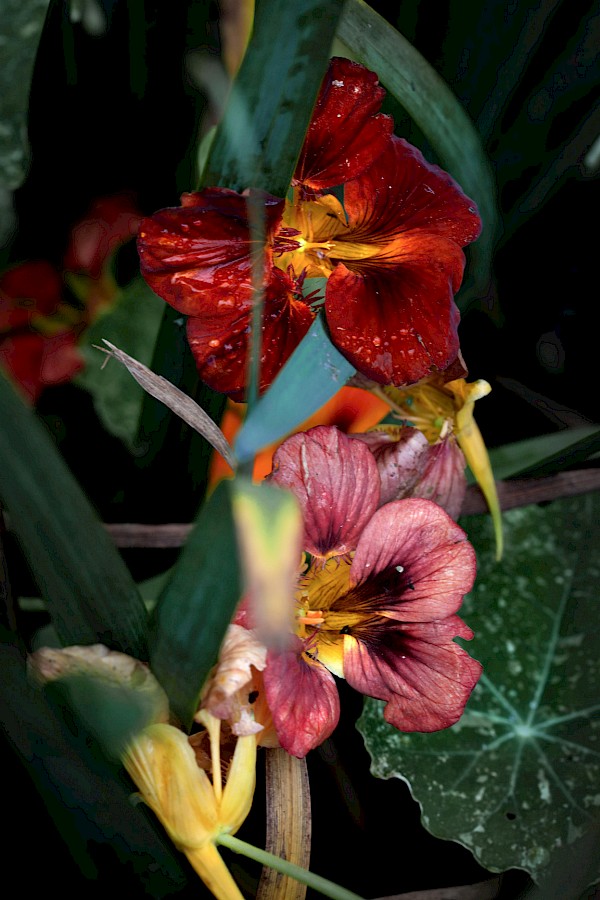
Miracle2 #01 Elspeth Diederix, 2021.

Miracle2 #01 Elspeth Diederix, 2021.
The website is created as digital herbarium to preserve the flowers of her garden and to record their growth through written observations, images and drawings shown in a clear grid system. As seen from the images of her social media and website, the flowers are not at all positioned in a strict system, but she embraces the wilderness and creates a flowy feeling in her garden. It is beautiful that she makes people aware of the aesthetics of flowers, and that she shows a rhythm, structure, system in her database, but not in the garden. I felt connected to Elspeth through the garden, although I never had met her. I understood her art.

The Miracle Garden, Amsterdam west. Initiated by artist Elspeth Diederix, 2017
...
During winter, it is not the best time to visit the artwork of this floral landscape. Apart from my
melancholy while being in this garden in January, I also felt a sense of relief. I knew that
the beauty of the garden would come back, and that all of its beautiful color would find its way
back up through the soil. Numb from the cold I leave the garden, knowing that I would definitely
come back to experience the garden in full color again in spring.
Still life
Real flowers were used on altars or to decorate the table to celebrate its lifelines and bring life in the house. Ornaments in particular, are historical art and craft pieces used to decorate products or buildings from the outside to the inside. In architecture, the ornament is an element added to what normally is a quite simple structured shape. It has aesthetic purposes to tell a narrative due to its decorative aspect. The ornament is created for human pleasure. Floral still life paintings are imaginative herbaria in a sense that they visually represent the flowers and their aesthetics, created by the human hand, to always have access to its beauty. The Dutch painters were obsessed with the shapes of the flowers for years which provided the perfect subject for their paintings. Constructing in this way their own herbarium collection, their own ornaments. Abraham van Beyeren painted a still life painting with flowers recognizable as tulips, roses and carnations, none of which bloom at the same time. On the left side of the vase, van Beyeren painted a watch. Watches and clocks in that time were associated with immortality and the transience of human life. These art pieces are there to honor and desire for their fragility, skill, aesthetics and human connection to nature. They take us back to when we could enjoy and interact with our natural surroundings more than we do now in the digital era.

Van Beyeren, Abraham. Floral still life with a watch. C. 1663-1665, Mauritshuis The Hague.
04 The Immortal Herbarium
After centuries, the Herbarium is still very important for scientists and botanists and allows people to study the plants at their own ease apart from blooming times. Besides this scientific and practical approach, botanical gardens became a museum where science and beauty joined forces.
In the Herbarium, creation is destruction. In order to research them, you have to pull out the plant and take them with you for further examination. In the past, because of their fragility, they were mostly drawn and etched to have a replication to research. This elimination can save plants from extinction caused by global warming, landscape destruction, or other human interference. The dried seeds can be saved for years, without losing their ability to reproduce. In this digital era, the collection of dried plants changed from piles of engraved illustrations into an online archive, making it accessible for people at the other side of the world. In this way, the form could be preserved eternally, making the Herbarium an immortal space of beauty.
05 The Critical Herbarium
The Greenhouse
Hortus Botanicus, Leiden — 13.12.22
In a greenhouse, exotic plants from all over the world are kept alive because of artificial temperature, humidity and air circulation. The paths lead you through the climates of dry scrubland, the desert and the jungle which are all situated in one location and locked in a huge structured glass cage. Looking in from the outside through the glass makes the place feel surreal and fantasy-like, like a paradise.
Inside the greenhouse, the humidity immediately makes me feel stuffy. The plants are overwhelmingly large. For a second I feel small compared to them. Looking up through the extensive leaves, I see a glimpse of the glass with the steel structure of the greenhouse. The pattern is interesting and beautiful but simultaneously makes me feels even more confined and slightly uncomfortable.

Hortus Botanicus, Leiden.
Seeing them in real life and not on the screen gives a different perception. They are real plants, but are they really real like this? Is this an honest experience?
The Imperial Ornament
Amsterdam — 24.01.23
Visiting the Rijksmuseum continued a slightly uncomfortable feeling. In their collection, you get an obvious impression of aesthetics in combination with imperialism, through the many ornamental pieces on chairs, closets, beds, plates and cutlery, frames and of course the strokes in between the frames that create the ‘artificial’ flower.
Most of the painted flowers were rare and precious specimens, only available for the wealthiest people in the 17th century. Now these ornaments are still very precious.
Points of critic
All the positive aspects of the garden and herbaria discussed in the previous chapters make me fall in love with nature over and over again. But alongside my research I came upon several critical points of view of the garden and botanical collections in the digital era.
Referring to the first chapter The Living Herbarium, where I briefly talked about the Garden of Eden, this too has some negative effects on our and nature’s existence. Contrary to the harmony of paradise, where everything lives and works together, lies a hierarchical Western system. After the Fall of the Garden of Eden, they had to take responsibility and care for their living environment with a dark thundercloud above their head. Where nature and humanity should have worked together in harmony, humanity took full control over nature. It is the start of seeing humanity at the top of the hierarchy and destroying and exhausting all natural resources and the wilderness.

Abraham Bloemaert. Adam Forced to Labour (The History of the First Parents of Man). 1604, engraving, 27.5 x 19.7 cm. Courtesy Centraal Museum, Utrecht.
The biological taxonomy—the act of naming, describing, and classifying all plants in the world—became very important in the Age of Enlightment, alongside the classification and ordering of the world, because of the interest in rationality and logic. The collection of specimens in an Herbarium arose from an oppressive system of extracting botanical knowledge from indigenous people forced to work on the plantations, and usurping it. In this post-colonial era, we still see the effects of this exploitation in the garden and herbaria in the Netherlands. Maria Sibylla Merian had many scientific and also aesthetic achievements during the 17th century. Besides her fame, her research thrived because of colonialism and the slave trade. Her research consists of the exploitation and labour of enslaved African and indigenous guides, using their knowledge. 4 To add to this, the rise of European territorial expansion and human interference in nature has caused a huge disappearance in native plants and biodiversity in the Netherlands, endangering the ecology.

4. Alongside one of her drawings, the Costus Arabicus, she writes: "I had my Indian
dig [Costus Arabicus] up by the root and carry it home and plant it in my garden.
[...] because the forest is so densely grown with thistles and thorns, I had to send
my slaves ahead of me with axes to hack out an opening for me” (to uncover
specimens)."
[Image] Maria Sibylla Merian. Costus Arabicus, 1719
“Botany, or the practice of botany, might at first appear to be a passive, peaceful, or even benign activity. But in fact, it was a practice absolutely integral to the expansion of empire. As a scientific discipline, botany emerged as a consequence of the exploratory voyages that European colonial powers sent around the world; in a sense, botanists became agents of empire.” 5
5. Gray, Ros and Shela Sheikh. The coloniality of planting: legacies of racism and slavery in the practice of botany, 27 January 2021. www.architectural-review.com/essays/the-coloniality-of-planting
Furthermore, because of the industrialization and the invention of new technologies we have lost our connection with nature. Humanity’s expanding empire has caused hugely negative effects on the natural world, destroying the wilderness to make way for cities. We exploited and destroyed the original physical world at an unprecedented scale, ‘pushing the planet’s life-support systems to the edge’. 6 The exhaustion of natural resources is near. Furthermore, our mass production, and in particular our digital devices, have caused immense degradation to our environment. In particular, coltan is a mineral that is crucial to the production of all modern technological devices. These metals are used for their resistance to heat, magnetic capacity, increased battery performance, and they produce the brightest colors on your screen. 7 These minerals suffer from mass production in our digital era, which is only expanding and taking a bigger part in our lives.
6. Greenfield, Patrick. Humans exploiting and destroying nature on unprecedented scale, 10 September 2020. https://www.theguardian.com/environment/2020/sep/10/humans-exploiting-and-destroying-nature-on-unprecedented-scale-report-aoe
Deforestation
7. Joseph-Gabriel, Daphné. Your Phone, Coltan and the Business Case for Innovative Sustainable Alternatives. February 2015. https://humanityinaction.org/knowledge_detail/your-phone-coltan-and-the-business-case-for-innovative-sustainable-alternatives/?lang=nl
Tetsumi Kudo responds to the environmental degradation caused by human interference and the depletion and exploitation of the earth’s natural resources. With his work he is rethinking the relationship between nature, humanity, and technology. In 1972, Kudo already invented The New Ecology. 8

Kudo, Tetsumi, Pollution of Nature! Decomposition of Humanity!. Cultivation, ed. Tine Colstrup and Laerke Rydal Jorgensen (Humblaek: Louisiana Museum of Modern Art, 2020), 33.
8. “In this new ecological system, it is not possible that human dignity alone should retain the
hauteur of a king. But is very difficult to remove the sentiment of privilege (human dignity)
and the sentiment of colonialism of the head of humanity that calls itself ‘humanist’.”
Kudo, Tetsumi, Pollution of Nature! Decomposition of Humanity!.
Cultivation, ed. Tine Colstrup and Laerke Rydal Jorgensen (Humblaek: Louisiana
Museum of Modern Art, 2020), 33.
“In order to more adequately understand how human agency became a ‘geomorphic force’ (Yusoff 2013), we analyse biotic upheaval caused by settler colonialism in the context of a broader remaking of relations among humans, plants, and place. We call this broad process ‘botanical colonization’ and see it as central to the rise of the Antropocene.” 9
9. Mastnak, Tomaz. Botanical Decolonization: Rethinking Native Plants. 27 March 2014, p364
Generally, plant awareness is lacking and only a few herbaria offer public displays, as natural history museums and cultural institutions mainly address their legacy of colonialism and representation through focusing on human-and animal-related collections.10 The colonial narrative in the plants in Herbaria is often not shown. Naturalis, in Leiden in the Netherlands, still leads the way in the world, as the museum scanned not only the herbarium sheets, but they also digitize the plant, date, location and collector of their half a million herbarium specimen collection to increase its visibility; making it accessible for people on the other side of the world. But does this solve the problem of acknowledgement? Do people in developing countries really have access to technologies used in developed countries?
10. Danihelka, Jirí and Arti Garg. The Colonial Legacy of Herbaria. November 2021. https://www.biorxiv.org/content/10.1101/2021.10.27.466174v2.full
Through the aesthetics of the Herbarium we can appreciate nature in multiple ways, but is it helpful enough for a healthy relationship between ecology and technology? What will happen with the real specimen in an even more digital future? Will there still be space for their physicality? Or will there only be artificial ornaments pleasing our desire for nature? And how will we appreciate nature in the future?
Conclusion
Alongside all the positive aspects of the garden and Herbaria, the sociopolitical issues need to be addressed. This critical perspective is highly needed in order to move towards a more inclusive future of nature, humanity and technology. The digitalization of nature is positive for the memorial garden in order to save experiences eternally and to create a spiritual connection with the natural environment. While being aware of the human interference in nature, I cherish that the aesthetics of the digital replication of the flower, and so of my memories, will be saved eternally. The ornaments create a certain desire for nature, created through our individual experiences.
Awakened
Leiden — 23.02.23
I close my laptop, put my headphones on and cycle towards the nearest meadows near my home. The cold wind and the soft raindrops awaken me from my exhaustive stare to the screen the whole day. I put down my bike. Stretch a little. Breath in deeply. Breath out deeply, while I try to let go all the tension in my body. Humming along the melody, the rhythm of the music becomes one with the movement of the grass.
In the distance, a cluster of birds fly up from the wide, open landscape, one quickly followed up after another. Working together perfectly, creating a flowy network. I try to capture the smooth movement with my phone, but I know it will never give me the same experience again.
I get back on my bike and cycle pass the fields back to the urban landscapes. I breath in the air deeply one more time and push out all the air in my lungs in a long, even sigh. A sigh that ends in a smile on my face, knowing that I always have access to this space.
To open up a dialogue to help us move towards a critical and more inclusive understanding of the
garden, and besides that, a deeper spiritual obliged interconnectedness between nature, humanity and
technology.
Bibliography
Articles
Mastnak, Tomaz. Botanical Decolonization: Rethinking Native Plants, 27 March 2014.
Gray, Ros, and Shela Sheikh. The Coloniality of Planting: Legacies of Racism and Slavery in the Practice of Botany, 27 January 2021. www.architectural-review.com/essays/the-coloniality-of-planting.
Burgering, Eva. Uit de schaduw van Maria Sibylla Merian, De Botanische Revolutie, Centraal Museum Utrecht, 23 august 2021.https://www.centraalmuseum.nl/nl/over-het-museum/nieuws-en-pers/kort-nieuws-en-blogs/uit-de-schaduw-van-maria-sibylla-merian
Polcha, Elizabeth. Breeding Insects and Reproducing White Supremacy in Maria Sibylla Merian’s Ecology of Dispossession, 20 June 2019. www.ladyscience.com/breeding-insects-and-reproducing-white-supremacy/no57. Accessed 9 January 2023.
Danihelka, Jirí and Arti Garg. The Colonial Legacy of Herbaria. November 2021. https://www.biorxiv.org/content/10.1101/2021.10.27.466174v2.full.
Books
Coccia, Emanuele. The Life of Plants, 2018.
Harman, Graham. Object-Oriented Ontology, a New Theory of Everything, 2018.
On the Necessity of Gardening, 2021
De Vries, Patricia. Against Gardening, Moments in the Life of a Gardener, p.43;
De Kam, René. The Agnieten Convent, a Garden of Encounters, Colours, and Symbols, p.103;
Cluitmans, Laurie. On the Necessity of Art and Gardening, a Story in Four Parts, p.111;
Jonny Bruce. Wallflower, p.177.
Kierkegaard, Søren. The Concept of Anxiety, 1844.
Aben, Rob, and Saskia de Wit. The Enclosed Garden, 1999.
Museums & artworks
Hortus Botanicus Leiden
Centraal Museum Utrecht
Kudo, Tetsumi. Pollution of Nature! Decomposition of Humanity!. 1972-73. Cultivation, ed. Tine Colstrup and Laerke Rydal Jorgensen (Humblaek: Louisiana Museum of Modern Art, 2020).
Van Beyeren, Abraham. Floral still life with watch. C. 1663-1665, Mauritshuis The Hague.
Diederix, Elspeth. The Miracle Garden. 2017
Bloemaert, Abraham. The History of the First Parents of Man. 1604
Acknowledgment
First, I would like to thank my mother and grandmother for showing me how to love and care for nature. I am grateful for the help of my aunt Andrea and her daughters Claire and Abi, for encouraging me to continue writing about a very personal and sometimes tricky subject. Finally, I want to thank my tutor Dirk Vis for always trying to clear my chaotic mind and helping me through my struggles and insecurities resulting in a piece of work that I am quite proud of.
